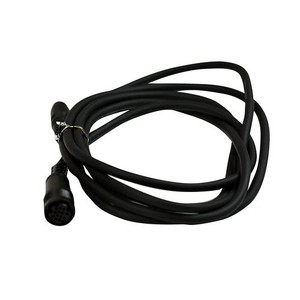
The FG-7000T Series digital torque gauges provide testing flexibility with their external torque sensor input. Torque sensors with standard chuck adapter are immediately recognized when connected to the display base and are available for your specific testing needs in 1 N-m (9 in-lb) 5 N-m (44 in-lb), 10 N-m (88 in-lb) capacities. The multiple-language FG-7000T provide menu programming for easy selection and set-up of the instrument to your desired requirements. Four selectable modes of operation include: Track mode for live readings, Peak mode for displaying the maximum reading, First Peak where only the initial peak is recorded once a decrease is sensed and Preset which initiates user-programmed tolerance alarms for go/no go testing. The display has two selectable operations, numerical view with directional bar graph or graphical view with directional bar graph. In graphical view when alarm tolerances are set, the process is plotted in relation to the upper and lower limit graph lines. Combined with the go/no go icons, a simple pass/fail determination is recognized. These high-tech instruments can data log a reading at the push of a button for simple data acquisition or be set to continuous data storage. Data can be viewed on the screen, sent to the optional printer, or loaded to be analyzed and graphed on the free software program. The 1,000 point memory with definable groups allows for multiple tests to be recorded and easily separated upon loading. In addition, the comparator output can be set up for integration of the instrument into a quality system for repetitive testing such as on a production line. The FG-7000T robust housings are designed to fit perfectly in the operator hand for portable testing. The large back-lit, 180 auto-reversible display, CW/CCW directional bar graph, combined with the dual labeled key pad allows for usage of the gauge in various positions while still being able to easily view and operate. These various features make the FG-7000T the ideal torque instrument for various applications such as closing or opening analysis of containers, valves and door hardware, failure or destructive torque testing, or almost any torque testing requirement involving incoming quality inspection, finished goods testing to R&D.




